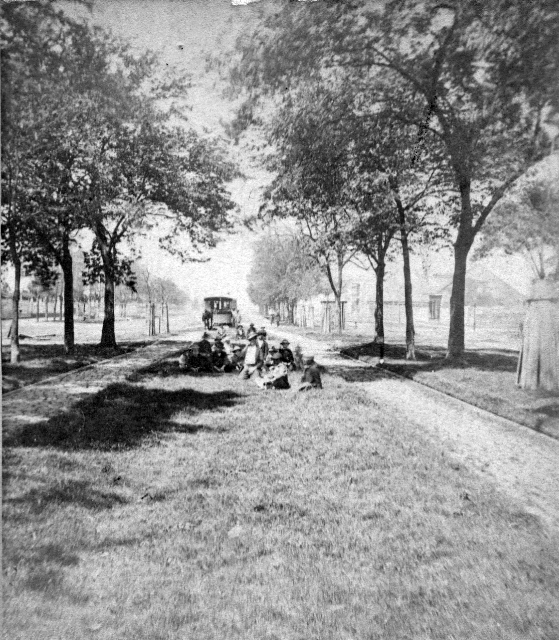

These two views clearly show that the early Canal line tracks were constructed with a very wide space between them. The top stereo view was taken in the middle of the Canal Street neutral ground at Claiborne, but it is not known whether it is looking inward or outward. We see a group of citizens relaxing on the “neutral grounds” (as the caption of the card puts it), while a horsecar approaches on the left track. Note the presence of gravel between the rails (probably clamshell gravel, which is widely used in New Orleans), presumably to improve footing for the horses (or mules). Without the gravel, in the wet climate of New Orleans, there would have been mud between the rails most of the time. The bottom view was taken somewhere along Canal Street, but the location is not known. We see that poles for electric lines have been installed along the edge of the neutral ground, but there are no trolley wires above the tracks, so this picture dates to the late horsecar era, perhaps c. 1890. — Theo. Lilienthal (upper)
The reason for the wide space between the tracks has been found by Morris Hill in an 1871 court decision. There was a drainage ditch down the middle of much of Canal Street, and the original tracks of the Canal Street horsecar line were laid on a platform built over this ditch. About 1869, the city cleaned out the ditch, and used the excavated material to build up the sides of the neutral ground. The horsecar company was then required to move its tracks into this position, flanking the drainage ditch. Of course, there is no sign of the drainage ditch in these pictures; apparently, it has been covered over or filled in.

